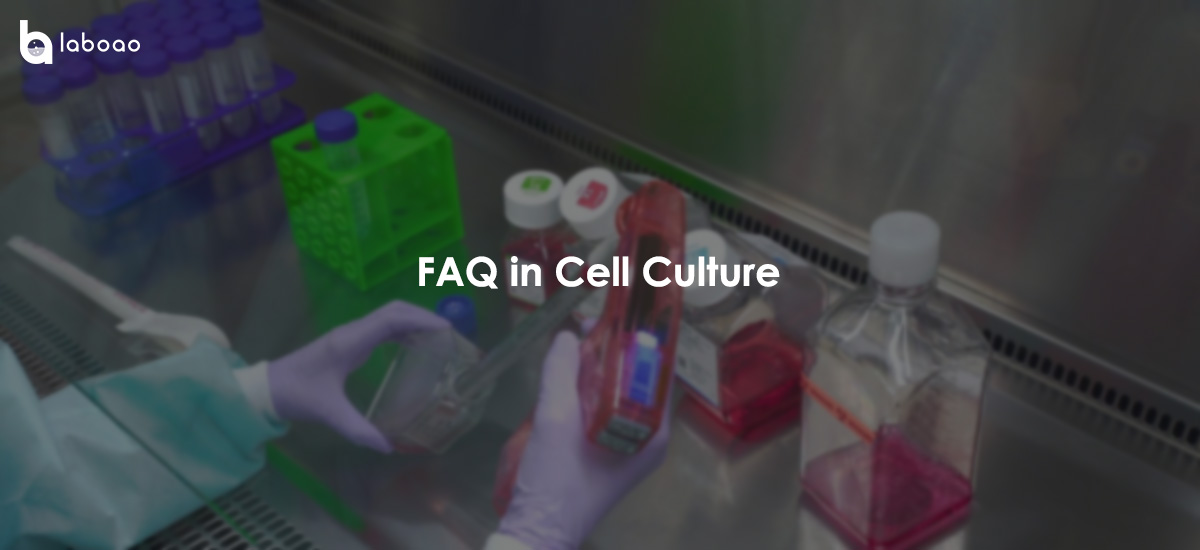
FAQ 1: Why do cells lack vitality after thawing, and the proportion of live cells is low?
This phenomenon may be mainly caused by the following reasons:
1. The quality of the culture freezing medium is lacking.
solution:
a. Ensure that the starter culture used to prepare the stock (freezing solution) needs to be healthy, free from microbial contamination, and in a late-log phase state of growth.
b. Care should be taken when harvesting cells to avoid cell damage.
2. Improper freezing method of stored goods
solution:
a. When freezing cells in liquid nitrogen, ensure that the concentrations of cells, culture medium, and other reagents, and freezing experimental procedures follow the supplier's recommendations. In general, cryopreservation should be slow, about 1-3°C/min to reduce ice crystal formation.
b. Use electronically programmable or mechanical freezing devices to ensure consistent, proper rate freezing.
c. Choose the most suitable cell cryoprotectant. If using glycerol, do not store it in the light, as exposure converts glycerol to acrolein, which is toxic to cells.
3. Improper storage of stored items
solution:
a. Storage should be kept at -130°C at all times, ideally in liquid nitrogen to ensure greater cell viability.
b. If the cells are directly immersed in liquid nitrogen, it is easy to cause the liquid nitrogen to leak into the cryovial, and there is a risk of explosion of the cryovial during thawing. Therefore, it is generally stored in a gas-phase environment above liquid nitrogen.
4. Improper cell thawing method
solution:
a. In general, cells should be thawed quickly, use pre-warmed medium, and remove medium containing cryoprotectants as soon as possible to prevent cell viability decline.
b. Make sure to handle the cells carefully. Do not vortex or centrifuge at high speed, as cryopreserved ones are particularly susceptible to damage.
FAQ 2: Is the adhesion of cells low after thawing or passage?
This is mainly due to the accumulation of static electricity on the culture vessel due to low humidity.
The generation of static electricity can be reduced by appropriately increasing the humidity of the room, using an anti-static device or wiping the outside of the culture container with a sterilized wet towel. In addition, factors such as the uneven mixing of reagents and the speed of the culture flask can also cause this phenomenon to occur. Therefore, when culturing cells, make sure that the solutions of cells and all reagents are well mixed. When using a shaking incubator for cell culture, pay attention to setting the appropriate rotation speed.
FAQ 3: Why do cells grow slowly?
There are many reasons why cells grow too slowly, the main ones are as follows:
1. The cells have been passaged too many times, so it is necessary to obtain a new cell stock solution with fewer subcultures.
2. The appropriate timing of cell harvesting was not selected.
When using a new cell storage solution, we should also take a suitable time for cell harvesting. Generally, in the later stage of the logarithmic growth phase is the cell harvesting time. When the cells reach 100% confluence, they will gradually enter slow growth due to overcrowded growth. During the growth phase, the activity of the cells also decreases.
The quality of the medium, serum, buffer, etc. is poor, or the formula is unreasonable. Culture medium, serum and other culture substances are the main sources of nutrients for cell growth, so their quality will directly affect the growth state of cells. Therefore, high-quality medium and reasonable reagent formulations play a decisive role in maintaining the good growth of cells.
3. The CO2 concentration does not match the buffer system requirements, resulting in insufficient pH control.
In general, the concentration of NaHCO3 in the buffer in the cell culture medium is proportional to the concentration of CO2. The higher the concentration of NaHCO3 in the buffer, the higher the concentration of CO2 required; this is how pH balance can be achieved.
4. Microbial contamination, especially mycoplasma
Check the pollution in time to prevent microbial contamination, and do a good job of mycoplasma, utensils, environmental disinfection, and mycoplasma removal.
5. The photosensitive degradation of the culture produces cytotoxic substances.
Prolonged exposure of the medium to fluorescence will result in the conversion of light-sensitive medium components into cytotoxic free radicals and H2O2, thereby affecting cell growth and even apoptosis. Therefore, it is usually necessary to store the nucleus medium in a dark place to avoid fluorescence exposure.
6. Inaccurate cell counting methods will result in poor cell growth
a. Ensure that the counted samples are well mixed to avoid local cell density differences affecting accurate counts
b. Double check all calculations for cell counts using a hemocytometer
FAQ 4: Why do cells grow unevenly?
1. Insufficient mixing of cells or medium: After inserting the cells into the medium, it should be gently shaken and mixed. After entering the shaking incubator, ensure a continuous and stable amplitude and frequency to avoid local concentration differences.
2. In the process of cell culture, sometimes there will be unbalanced cell growth among the same vessels in the same period.
This may be caused by uneven temperature inside the incubator. Pay attention to the following two points: a. Avoid stacking culture vessels, because the bottom culture vessel closest to the metal rack may heat the fastest.
b. If the culture vessels placed in the front of the incubator grow slower than the rear ones, take care to keep the door of the incubator as tightly closed as possible and move the front culture vessels to the back.